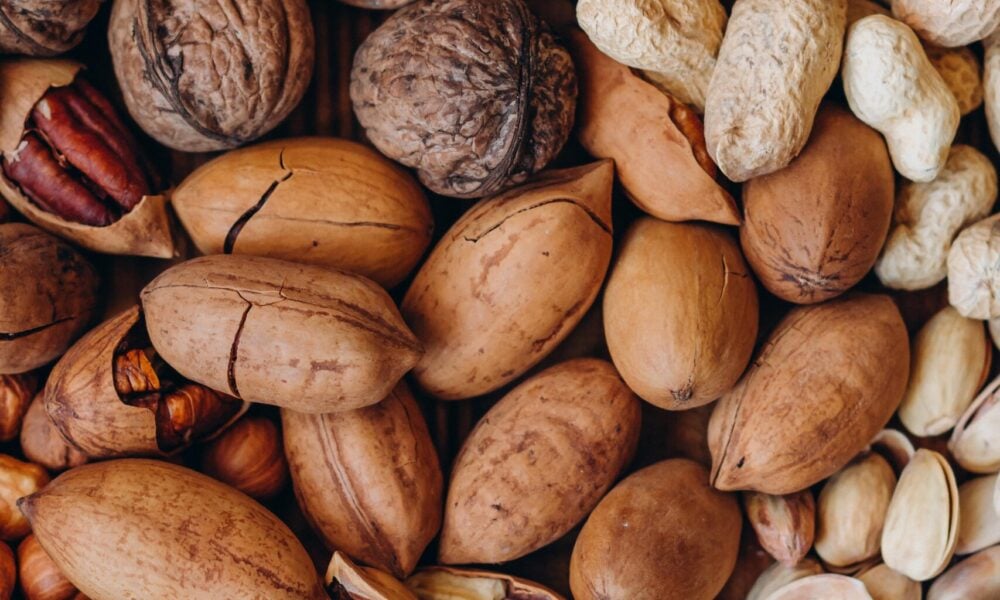More than one million people suffer from a tree nut allergy in the UK, making a tree nut allergy one of the most common food allergies among adults and children. According to AllergyUK, people most often develop tree nut allergies before the age of five. Still, all ages can develop a tree nut allergy, even when symptoms have not been present previously. People with a tree nut allergy may grow out of them over time, but they will likely be allergic for a lifetime.
What is a Tree Nut Allergy?
AllergyUK states a tree nut allergy is caused by the body’s immune system reacting to the proteins in the nut. The body may think these proteins are harmful intruders, and this causes the immune system to respond by fighting off the proteins. Commonly, a tree nut needs to be consumed to trigger a reaction, but even the smallest amount of nut protein can cause the body to react, and on rare occasions, a response may be caused by inhaling tiny particles of nuts.
An allergy to one tree nut does not always mean an allergy to all tree nuts. However, as different nuts can have similar proteins, your chances of being allergic to multiple types of tree nuts are increased if you’re already allergic to one.
Symptoms of a Tree Nut Allergy
According to Food Allergy Canada, on most occasions, an allergic reaction will happen within minutes after exposure to tree nuts. But a reaction can occasionally occur several hours after exposure.
VeryWellHealth says the most common symptoms of a tree nut allergic reaction usually include:
- Trouble breathing (including wheezing and throat tightness)
- Coughing and sneezing
- Stomach pain
- Vomiting or diarrhoea
- Swelling of the mouth, throat, or face region
- Hives, or itchy skin
- A drop in blood pressure
- Dizziness or fainting
- Dermatitis
- In worst-case scenarios, anaphylaxis
According to Kids Health, anaphylaxis is a life-threatening reaction that causes the airways to swell and close, as such the individual going into shock or fainting. If not treated immediately, anaphylaxis can be fatal.
Anaphylaxis may start with similar symptoms to a milder reaction but quickly worsen. People suffering from an allergic anaphylactic response should immediately use an epinephrine auto-injector (‘EpiPen’) an ambulance should be called for.
What is a Tree Nut, and What Are 'True Nuts'?
According to ScienceDirect, “tree nuts is the collective term used to describe nuts that grow on trees”. But not all nuts are tree nuts, and may instead be seeds (e.g. pine nuts) or fruits (e.g. hazelnuts) that have a nut-like appearance and similar role in cooking and consumption. Fruits and seeds that resemble nuts are regarded as ‘culinary nuts’.
Culinary nuts can be separated into four categories:
- True (botanical) Nuts – These nuts are ‘real nuts’ according to the botanical definition (“botanically, a nut is a dry fruit that consists of a hard shell covering a single seed.”). Examples of true nuts include: chestnuts, hazelnuts, and acorns.
- Drupes – A drupe is a fleshy fruit surrounding a shell in which a seed is contained. Some of these seeds are culinary nuts. Drupe seeds include: pistachios, cashews, and almonds.
- Nut-like angiosperm seeds – Angiosperms are a flowering plant, the seeds of which are contained within a fruit, and includes: brazil nuts and macadamia nuts.
- Nut-like gymnosperm seeds – Gymnosperms, unlike angiosperms, do not flower and the seed is not protected by a fruit. Gymnosperm seeds aren’t as widely consumed compared to the categories of nuts, but an example of a gymnosperm seed we’re probably most familiar with is the pine nut.
Whilst ‘coconuts’ include the word ‘nut’ in their name, they are not actually regarded as a tree nut, but instead part of the palm family.
Most Common Tree Nuts
According to the World Atlas, the nine most widely consumed tree nuts are:
- Almonds
- Brazil nuts
- Cashews
- Hazelnuts
- Macadamia nuts
- Pecans
- Pine nuts
- Pistachios
- Walnuts
Peanuts
According to AllergyUK, 2% of children in the UK suffer from a peanut allergy and this has been increasing in the last few decades. A peanut allergy usually develops in early childhood but may be formed in adulthood. One in five children outgrow their peanut allergy over time.
By definition, peanuts are not nuts; they are legumes. Legumes are a completely different family of plant to tree nuts, meaning that a peanut allergy does not automatically confer a tree nut allergy. However, 30% of those allergic to peanuts are also allergic to tree nuts, and also 30-40% children with a peanut allergy are allergic to at least one type of free nut.
LiberEat’s allergen and error detection technology provides an allergen safety blanket for food businesses to ensure that consumers are safe and healthy when eating at your restaurant or consuming your food products.
LiberEat offers a second line of defense for food businesses by detecting errors, allergens, and other harmful ingredients. Food businesses can apply this technology directly to identify errors in allergen communications, preventing the risk of injury. Get in touch with us today to learn more about our Allergen Detection Technology.

